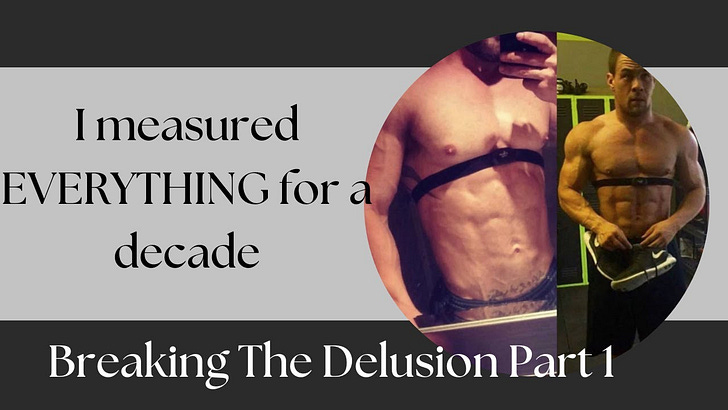Make sure to watch to listen to part 1, first.
Before we get into this,
Understand simply that moving forward right now - you do not need to be correct.
This is an easy trap to get into.
Because we're talking about identifying the most immediate constraint towards getting what you want, and that sounds like something which has a correct answer - that it's definitive.
Which it is - your most immediate constraint can be defined.
But you've got a bit of a chicken and egg situation, if you do not know what your most immediate constraint is.
How we figure that out is through movement.
Engaging the Field in an attempt to fix what you believe is the most immediate constraint is the action which will actually reveal to you what the most immediate constraint really is.
So,
Don't worry about being right or wrong.
The answer is out there, in the world, not in your head.
Do your best to pick what looks like your most immediate constraint, move forward in Engaging the Field, and then in retrospect after the fact use your observation and continued Engagement to uncover where you can more effectively focus.
Ask yourself one of these 3 questions:
Note: You don't have to answer all of these, or any of these, if they are not useful. These are simply questions which can be helpful in identifying your most immediate constraint if you feel like you are having trouble knowing what that is.
1 - What is the smallest change that will have the biggest impact?
Let's say your goal is to lose weight. You might think through all the different things you can do and not sure where to start, but if you think about the smallest change that might have the greatest impact, you could come to the conclusion that if you stopped eating sugar, that might actually have a massive impact on how many calories you consume in a day.
You might also not be able to tell what the smallest change for the biggest impact is, and that's ok. Make a hypothesis and then test it out.
2 - What is the one thing, if solved, would fix most things?
Let's say you run a business, and you're struggling to see growth in revenue/sales. As you take a look at the numbers, your conversions to sale appear pretty decent, your ads themselves also seem to have solid performance. The problem is your ads just book straight to a call, you have no lead capture or nurture.
You hypothesize that if you had lead capture to email and long term nurture, you'd have a lot more consistent lead flow leading to more consistent sales, and you'd probably also sell to more people in general.
3 - It's impossible unless ...
This is useful exercise to run through because it can reveal a constraint hidden behind something you think is not possible.
Take the above example with lead generation. Let's say you considered that, but you think "it's impossible for me to make email marketing work for my business"
Then you might think ... unless ...
'I find a strategist and writer who can sound like me and who respects my vision'
Well, now we're uncovering some interesting constraints. This would direct your focus and attention to finding an email marketing individual who is capable of carrying your voice and vision while also serving your business's growth needs.
Another one:
"It's impossible for me to go to the gym consistently unless I sit down with my wife and all our scheduling and map out the specific days and times I'm going to go no matter what, without negatively impacting anything else"
Sometimes the solution to the problem reveals itself just through that prompt alone.
System Reliability (Constraint Math)
This is about identifying the components of the constraint you're trying to solve in order to see which part is most likely to have the greatest impact on the system as a whole.
System reliability is actually pretty straightforward concept.
Every component added to a system lowers the overall reliability of that system.
An example: Turning on a light.
Let's say when you walk into a room, flip a switch for the light to come on and 99% of the time that works and the light comes on.
1 component, 99% of the time the light comes on.
Now lets say you only remember the flip the switch 99% of the time.
So, 2 components. The switch and your memory, both 99% effective.
99% x 99% = 98% -- that means the light only actually comes on 98% of the time.
Now let's say the power is out 1% of the time you do this, so 99% of the time the power works.
3 components. The switch, your memory, and electricity.
99% x 99% x 99% = 97% -- the light only comes on 97% of the time.
See how the more components you add, the more the overall effectiveness goes down. The illustration is more dramatic with bigger numbers.
Let's take a (very) simplified business system, and use this to consider how you might identify which components to work on first:
Say, you send emails out which have calls to action for people to book a call, you hop on the call, and then sell them.
Let's say every time you send an email you get 20% of the list clicking through to book a call, 50% of the people you talk to you close, but only on 10% of the days do you send an email.
20% x 50% x 10% = on any given day you've got a 1% chance of making a sale.
On the days you send email, you've got a (50% x 20%) 10% chance of making a sale.
How do you improve?
A lot of people would focus on the click to schedule, or the call conversion.
Let's say you increase your close rate from 50 to 70%. That means your chance of making a sale (70% x 20%) goes up to 14% when you send an email, or 1.4% on any given day.
Let's say instead you decide to increase the % of people who book a call, and you go from 20% to 40%. That means your chance of making a sale (40% x 50%) goes up to 20% when you send an email, or 2% on any given day.
Both of those changes were a 20% increase, but notice how the component that was less reliable (the % of people booking) had a bigger impact when improved - if that feels obvious as you look at it, that's because it should be.
But what about that 3rd component ... how often you send an email?
If you go from sending an email on 10% of days to 30% of the days (again, an increase of 20%), your chance of making a sale each email doesn't change - it's still 10% (50% x 20%), but now your chance of making a sale on any given day is 3%.
(Side note, this is why when it comes to email marketing, often the easiest answer to increasing conversions is just to send more email - if this kind of tidbit is your jam, check out Man Bites Dog1)
All that simple math is there to make it super clear ...
That the smartest way to approach your constraints is to find the least reliable components of your system, and then either improve them or remove them (removing them if possible is best because it's mathematically the same as making them 100% reliable).
AND you've got to be clear about your intended outcome, and look at all the components of the system for that outcome.
(Note: you'll discover through Engaging the Field that as you change components of a system, they will impact other components of the system ... nothing is altered in a vacuum ... but you have to Engage the Field and collect the data to know)
Let's take the last example from the "It's impossible unless ..."
Components of the system in ‘going to the gym' regularly’ might include ...
Time - is the time available? Seems like only 10% of the time I'm not also in the middle of something else when it makes sense for me to go
Obligation - do I have other things I need to be around for? Seems like 50% of the time I have an unavoidable obligation
Energy - do I have the energy to go to the gym? Seems like 95% of the time I've more than enough energy
Willpower - if I have the time available, and the energy, and no other important obligation, will I make myself go? Seems like I almost always will if everything else lines up - lets say 95%.
So, 10% x 50% x 95% x 95% = 4.5% chance I’ll go to the gym.
In the example above, I identify that it seems like I never have "Time," and the hypothesis is that if I can "create" the time through scheduling coordination, then that should vastly improve the reliability of that part of the system.
If I can make that “Time” component a lot more reliable - let’s say even just 50% reliable - through better communication, planning, and scheduling, I could bump my chance of going to the gym to 22.5%.
(This is a very rough example, but hopefully you see the point)
If my problem wasn't time (as far as I perceive), but that I always felt exhausted when the time was available, I might look at my energy management (maybe more sleep, changing diet, etc) to improve the least reliable component.
Final Note:
See how the point is NOT to be correct but rather to make an educated hypothesis and then test it by Engaging the field.
For Your Ease of Reference, here again are the questions:
The Questions. The questions will help you dial in on the problem you’re trying to solve. For example: “I need more clients”.
What is the smallest change that will have the biggest impact?
What is the one thing that, if solved, would fix the most things?
It’s impossible unless…..?
The Math. Once you know what you’re trying to solve, you can use basic math to determine what to focus on. If you need more clients, you can identify which component of your client acquisition system to focus on.
The Math & System Reliability:
Resources:
Next: Part 3 Effective Questions
Ready to Step Into The Arena?
You can get on the waitlist: https://engagethefield.com/
or
Get your own copy of the Handbook: https://engagethefield.com/handbook














